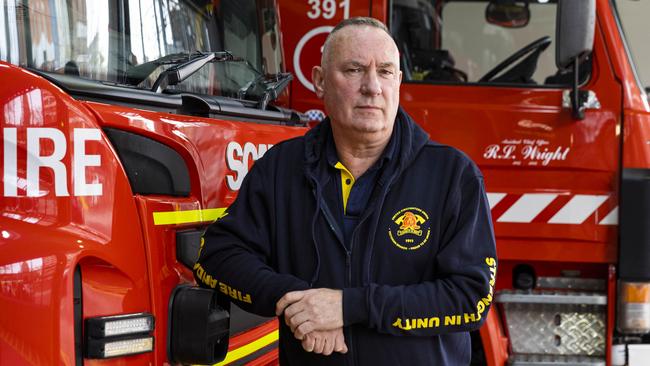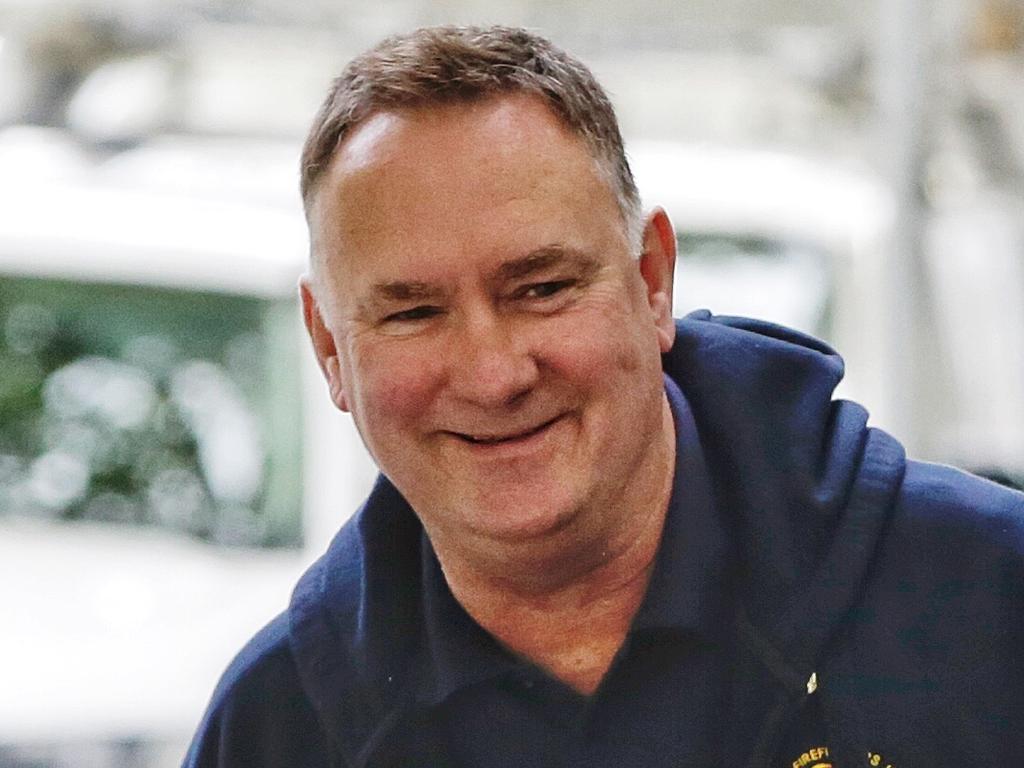Daniel Andrews’ fire body $132m in the red
The Victorian fire agency created by the Andrews government’s CFA-MFB merger blames increased employee expenses for the deficit.

The Victorian fire agency created by the Andrews government’s controversial CFA-MFB merger has blamed increased employee expenses associated with the restructure for a $132.5m deficit, having spent an average of $186,526 – including $21,279 in overtime – on each of its 4516 employees in 2021-22.
Fire Rescue Victoria’s deficit follows a $34.4m surplus in 2020-21, and comes amid pay negotiations between the Andrews government and the United Firefighters Union, which is seeking a 25.9 per cent pay rise over three years – averaging 8.6 per cent annually.
Under entitlements negotiated in 2018, Victorian firefighters in the job for more than two years are entitled to up to 138 days of paid leave per year, including 54 days of personal and sick leave, 65 days of annual leave, an extra four days if a family member (including a niece or nephew) is ill or injured, 10 days of community service leave and five days of union training.
In its second-ever annual report, tabled in state parliament late last year, FRV blamed its deficit on “expenditure related to the FRV transition”, with expenses from transactions increasing by $143.8m (15.6 per cent), in 2021-22.
“The main cause of the increase was employee expenses, which increased by $86.2m (11.4 per cent) to $842.4m; of this increase $60.3m primarily relates to increased salaries and overtime related to an increase in staffing due to the impacts of the FRV transition,” the report states.
Salaries and wages, annual leave and long-service leave increased by $36.0m, or 6.8 per cent on 2020-21 figures, overtime by $24.3m (33.81 per cent), WorkCover expenses by $13.3m (63.15 per cent), defined contribution superannuation expenses by $4.8m (59.63 per cent), payroll tax by $6.2m (19.73 per cent), travelling and meal allowance expenses by $1.6m or (10.37 per cent), and relocation expenses by $1.5m (152.96 per cent).
FRV was established in July 2020 by the amalgamation of 1400 career members of the largely volunteer-based Country Fire Authority with the Metropolitan Fire Brigade. The merger was the result of years of lobbying by the UFU, the fallout from which prompted the resignations of former minister Jane Garrett and three CFA chiefs.
In what was widely seen as a quid pro quo, UFU members played key roles in the Andrews government’s 2014 and 2018 election campaigns. However, a souring of its relationship with the government saw secretary Peter Marshall publicly back the Greens and a range of other left-wing minor parties and independents in the November poll.
Emergency Volunteer Awareness Campaign director Garth Head – a Labor Party veteran who fought against the merger – said the formation of FRV had been an “ultimate mistake, not leading to greater public safety, but leading to greater public cost”.
“It all emanates from a backroom deal which ultimately did not see the UFU supporting the state government at the last election in the way that they had as part of the deal in previous elections,” Mr Head said.
“(The deficit is) absolutely predictable. It was what I was warning as a former Labor government adviser, based on years of experience.
“This is no reflection on the brave and dedicated paid firefighters. Rather, it’s a reflection on organisational incompetence manifested by the Andrews government in emergency services.”
Mr Head warned that a reduction in the number of operational CFA volunteers since the merger places Victoria at grave risk amid predictions of dangerous fire seasons ahead.
Coalition emergency services spokeswoman Ann-Marie Hermans said it was clear the Andrews government’s “secret union wages deal” was “driving Victoria’s firefighting services bankrupt”.
“The development of FRV was supposed to be a cost saver but year after year Victoria’s fire services become more and more unsustainable, placing lives and livelihoods across the state at risk,” Ms Hermans said.
Mr Marshall did not respond to a request for comment.
The FRV report shows the agency missed a slew of key performance targets by more than five per cent, responding to only 84 per cent of road rescues within the benchmark time, conducting insufficient fire education and risk reduction programs, not having a sufficient percentage of staff complete core skills maintenance drills, failing to open investigations into 16 per cent of relevant incidents within 14 days, and having higher than expected workforce turnover.
Employee expenses in 2021-22 totalled $842.36m — up 11.4 per cent on the previous year. Total staff numbers increased by 5.1 per cent to 4516 per cent, including a 4.43 per cent jump in operations staff to 3888, and a 9.22 per cent increase in corporate and technical staff who now total 628.
The average expense per employee of $186,527 represents a 6.0 per cent increase, while the $21,279 overtime component represents a 27.4 per cent increase.
The biggest hike in employee expenditure was among executives and other senior staff — nine of whom are on salaries of between $280,000 and $480,000 — with remuneration of executive officers increasing by $7.17m, or 34.96 per cent, largely due to salary increases and an increase in the number of executives — from 85 to 94.
Expenditure on consultants almost doubled, increasing by $2.17m to $4.33m — with $420,000 paid to labour relations consultant Peter Parkinson to provide “specialist employment/IR advice”.
Victorian firefighter base salaries currently range between $90,420 for a qualified firefighter with at least 36 months training, to $231,654 for an assistant chief fire officer.
Recruits get $57,907, but this increases to $80,736 as soon as they complete their 20-week training course.
Firefighters work a “10/14” shift system which comprises two day shifts (8am – 6pm) followed by two night shifts (6pm – 8am), followed by four days off over an eight day cycle.
An Andrews government spokeswoman said Victoria was one of the highest fire risk areas in the world, and the government was ensuring firefighters had the resources to save lives.
“We said we’d increase firefighter numbers and that’s exactly what we’ve done, with an additional 450 funded since 2015. We make no apologies for ensuring all Victorians are safe and have access to some of the best firefighters in the world,” the spokeswoman said.
“Our fire services reform enshrines in law the important ongoing role of volunteer firefighters, guarantees the independence of the CFA, and delivers 24/7 firefighter coverage to growing communities across Victoria.”
Editor's note: An earlier version of this article stated that Victorian firefighters in the job for more than two years were entitled to up to 196 days of paid leave per year. This calculation was based on an entitlement to 54 days of personal leave and 45 days of sick leave, which the FRV Victorian Operation Employees Interim Enterprise Agreement 2020 says is "in addition to personal leave" when discussing sick leave. Following a complaint from the United Firefighters' Union, The Australian now understands both entitlements are drawn from the same pool. Public holidays were miscalculated based on confusion in the workplace agreement between on and off shift staff.






To join the conversation, please log in. Don't have an account? Register
Join the conversation, you are commenting as Logout